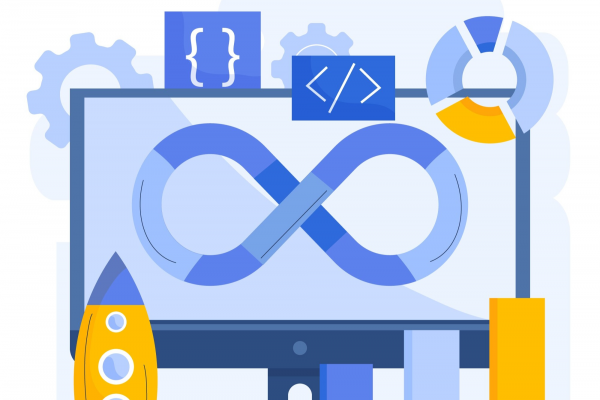In the rapidly evolving digital landscape, the terms Web 2.0 and Web 3.0 are frequently discussed, each representing significant technological shifts. However, a new term, Web 2.5, has emerged, symbolizing an intermediary phase that bridges the gap between these two evolutionary stages. This blog delves into what Web 2.5 is, its significance, and how it seamlessly connects the collaborative and social aspects of Web 2.0 with the decentralized and user-centric features of Web 3.0.
Understanding Web 2.0 and Web 3.0
To comprehend Web 2.5, it’s crucial first to understand Web 2.0 and Web 3.0:
Web 2.0: This phase of the internet, also known as the social web, focuses on user-generated content, usability, and interoperability. Key features include social networking sites, blogs, wikis, and interactive platforms that allow users to engage, share, and collaborate. According to Statista, social media users worldwide numbered approximately 4.2 billion in 2021, illustrating the vast reach and impact of Web 2.0 platforms .
Web 3.0: Often referred to as the semantic web or decentralized web, Web 3.0 aims to create a more intelligent, connected, and open internet. It leverages technologies like blockchain, artificial intelligence, and machine learning to facilitate decentralized applications (dApps), smart contracts, and data ownership. Gartner predicts that the business value added by blockchain will potentially exceeding $3.1 trillion by 2030 .
Defining Web 2.5
Web 2.5 represents a transitional phase that integrates elements of both Web 2.0 and Web 3.0. It combines the collaborative and user-centric aspects of Web 2.0 with the emerging technologies of Web 3.0, such as blockchain, to enhance security, privacy, and data ownership without fully moving to a decentralized web.
Key Characteristics of Web 2.5
- Enhanced Security and Privacy: Web 2.5 utilizes blockchain technology to improve data security and privacy. While Web 2.0 platforms often store user data on centralized servers, making it vulnerable to breaches, Web 2.5 introduces decentralized storage solutions to mitigate these risks.
- Interoperability: Web 2.5 ensures seamless interaction between Web 2.0 applications and Web 3.0 technologies. This includes the integration of decentralized finance (DeFi) protocols with traditional financial systems, allowing users to benefit from both ecosystems.
- User Control and Data Ownership: Unlike Web 2.0, where data is controlled by large corporations, Web 2.5 empowers users with greater control over their personal information. Through blockchain technology, users can own and manage their data, deciding who can access it and how it can be used.
- Progressive Decentralization: Web 2.5 serves as a stepping stone towards complete decentralization. It adopts certain decentralized elements, such as smart contracts and peer-to-peer networks, while maintaining some centralized features for ease of use and mass adoption.
Real-World Applications of Web 2.5
- Social Media Platforms: Web 2.5 social media platforms integrate blockchain technology to provide users with greater control over their content and data. For example, platforms like Steemit and Minds reward users with cryptocurrency for their contributions, promoting a more equitable content ecosystem.
- Financial Services: Web 2.5 bridges traditional financial services with decentralized finance (DeFi). This includes the use of blockchain for cross-border payments, reducing transaction fees and increasing efficiency while maintaining regulatory compliance.
- Supply Chain Management: By incorporating blockchain technology, Web 2.5 enhances transparency and traceability in supply chains. This hybrid approach allows companies to track products from origin to consumer, ensuring authenticity and reducing fraud.
The Importance of Web 2.5
Web 2.5 plays a critical role in the gradual transition towards a fully decentralized web. It allows users and businesses to adapt to new technologies incrementally, reducing the disruption that a sudden shift to Web 3.0 might cause. Additionally, it addresses some of the key challenges of Web 2.0, such as data breaches and privacy concerns, while paving the way for the broader adoption of Web 3.0 technologies.
Challenges and Considerations
While Web 2.5 offers numerous benefits, it also presents challenges that need to be addressed:
- Scalability: Integrating Web 3.0 technologies, such as blockchain, with existing Web 2.0 infrastructure can be complex and may face scalability issues. Ensuring that these systems can handle large volumes of data and transactions is crucial for widespread adoption.
- Regulation and Compliance: As Web 2.5 platforms incorporate decentralized elements, they must navigate regulatory landscapes that are still evolving. Ensuring compliance with laws and regulations while promoting innovation is a delicate balance.
- User Education: For Web 2.5 to succeed, users must understand the benefits and functionalities of the new technologies being introduced. This requires significant educational efforts to ensure users can effectively utilize and trust these platforms.
Future Prospects of Web 2.5
Web 2.5 is a pivotal stage in the evolution of the internet. It offers a pragmatic approach to integrating emerging technologies while retaining familiar aspects of Web 2.0. As more businesses and users recognize the benefits of enhanced security, privacy, and data ownership, the adoption of Web 2.5 is likely to accelerate.
Conclusion
Web 2.5 represents a significant milestone in the digital evolution, bridging the gap between the collaborative nature of Web 2.0 and the decentralized promise of Web 3.0. By offering enhanced security, interoperability, user control, and progressive decentralization, Web 2.5 paves the way for a more secure, transparent, and user-centric internet. With STL Digital, businesses and users can seamlessly embrace web 2.5, the journey towards a fully decentralized web becomes increasingly attainable.



